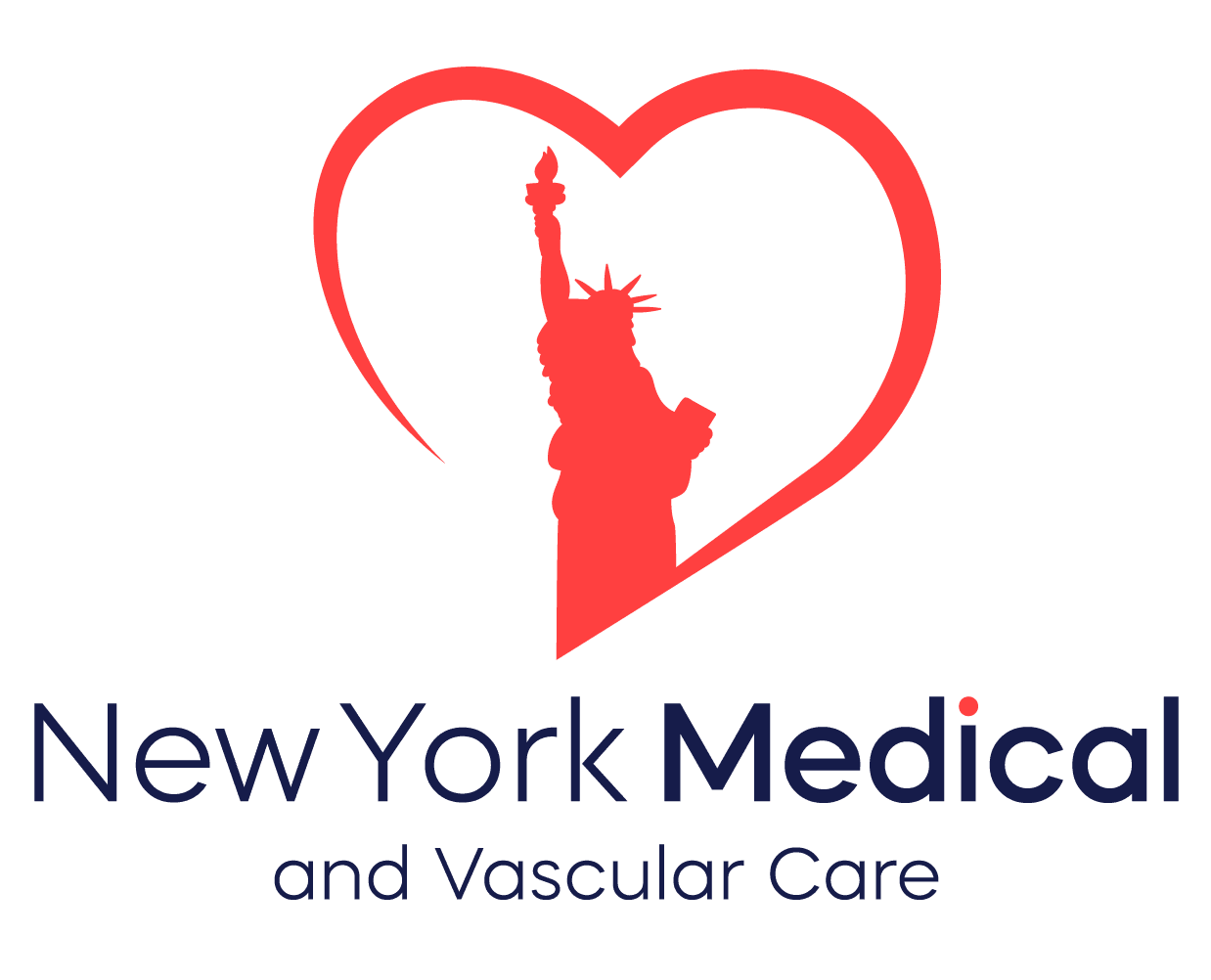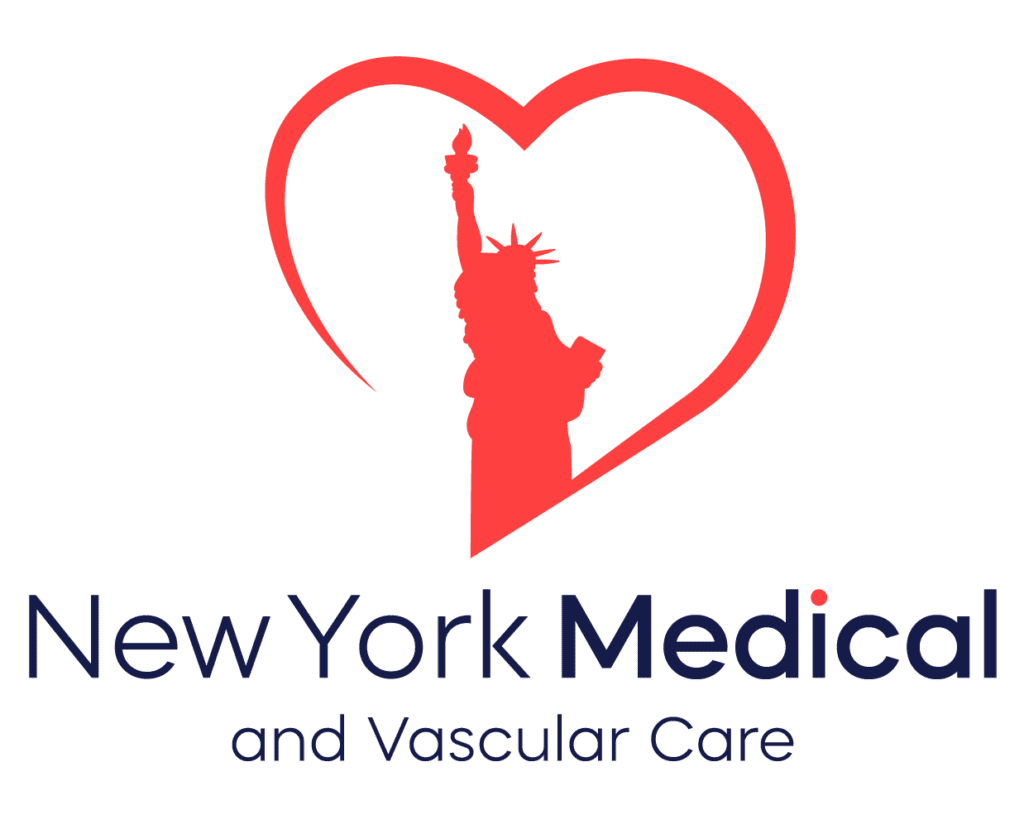Why This Post Matters
More than one in four New Yorkers over 40 has some degree of chronic venous insufficiency (CVI).¹ Yet many chalk up aching calves and ankle swelling to “just getting older.” Untreated CVI progresses—from spider veins to skin discoloration and hard-to-heal ulcers—costing mobility and quality of life. The good news: modern endovenous diagnostics and minimally-invasive treatments mean you can fix the problem without hospital surgery. Here’s what to watch for and exactly how NYMVCare’s vascular and podiatry teams in Brooklyn & Queens evaluate and treat failing leg veins.
1. What Is Chronic Venous Insufficiency?
Leg veins contain one-way valves that push blood uphill against gravity. When valves weaken, blood pools, pressure rises, and veins bulge. Over time that pressure leaks fluid into surrounding tissue, causing swelling and inflammation.
Common Signs & Symptoms
| Early | Advanced |
| Heavy or tired legs, especially after standing | Skin darkening (hyperpigmentation) around ankles |
| Night-time calf cramps or restless legs | “Hard” or scaly skin (lipodermatosclerosis) |
| Visible varicose veins or spider veins | Venous ulcers near the inside ankle |
If you’re on your feet all day—nurses, teachers, retail staff—you’re higher risk. Pregnancy, obesity, and family history add fuel.
2. NYMVCare’s Three-Step “Vein Check” Protocol
Step 1 – Clinical Scoring
We start with the VCSS (Venous Clinical Severity Score) and simple questions: Do symptoms improve after elevating your legs? Are socks leaving deep ankle marks?
Step 2 – Office Duplex Venous Doppler Ultrasound
The gold-standard test combines B-mode imaging (to see vein walls) with color Doppler (to track flow) and spectral Doppler (to measure reflux time). If blood reverses for >0.5 seconds in the great saphenous vein, we label that segment incompetent.¹ (cms.gov)
What to expect: Gel on your legs, a handheld probe, 30 minutes. No needles, no radiation.
Step 3 – Adjunct Tests (If Needed)
- Photoplethysmography checks calf-muscle pump function.
- CT venography or MR venography if ultrasound hints at pelvic-outflow obstruction.
- Ankle-brachial index to ensure arterial circulation supports compression therapy.
Results feed into the CEAP classification (Clinical–Etiologic–Anatomic–Pathophysiologic), guiding treatment.
3. Treatment Options—From Compression to Cutting-Edge Ablation
A. Compression Therapy
Still first-line: graduated stockings (20–30 mm Hg) reduce swelling and pain. New micro-fiber and open-toe styles boost summer compliance. The latest SCAI guideline confirms compression improves symptoms but is less effective than endovenous ablation for long-term quality of life.² (jscai.org, scai.org)
B. Endovenous Thermal Ablation
- Radiofrequency Ablation (RFA) – A catheter heats the vein to 120 °C, sealing it shut.
- Endovenous Laser Ablation (EVLA) – Laser fiber delivers targeted heat; newer 1470-nm wavelengths reduce bruising.
Both are office procedures under local anesthesia; walking immediately after is encouraged. Guidelines now recommend endothermal ablation over traditional vein stripping for saphenous incompetence.³ (cms.gov)
C. Non-Thermal, Non-Tumescent (NTNT) Techniques
- Cyanoacrylate Glue (VenaSeal™) – FDA-cleared medical adhesive closes the vein without heat or tumescent anesthesia. A 2024 AVLS position statement supports its safety for perforator veins.⁴ (uhcprovider.com)
- Mechanochemical Ablation (MOCA, ClariVein®) – A rotating wire plus sclerosant damages and seals the vein; no heat means less bruising.⁵ (nice.org.uk)
D. Ultrasound-Guided Foam Sclerotherapy
For tributary or residual varicosities: physician mixes polidocanol with air, foaming agent sticks to vein wall and triggers closure.
E. Lifestyle & Adjuncts
Weight control, calf-muscle exercises, and avoiding prolonged standing/sitting augment any procedure.
4. Evidence Snapshot—Why Early Ablation Pays Off
A landmark JAMA Surgery RCT showed early endovenous ablation before ulcer healing shortened wound-closure time by four months compared with compression alone.⁶ (esvs.org)
SCAI’s 2025 draft guideline analysis indicates ablation improves Venous Clinical Severity Score by 2.1 points at six weeks versus compression alone.² (scai.org)
5. NYMVCare’s Patient Journey
- Consult & Doppler – Same-day results.
- Team Review – Vascular medicine, podiatry, and wound-care nurse huddle to pick RFA, EVLA, glue, or conservative care.
- Procedure Day – 45 minutes, local anesthesia, zero stitches.
- One-Week Check – Duplex ultrasound to confirm closure; if tributaries remain, foam sclerotherapy scheduled.
- Three-Month Follow-Up – CEAP and VCSS reassessment; compression refit if needed.
Insurance? Most commercial plans and Medicare cover ablation when ultrasound proves reflux and symptoms impair function.
6. Frequently Asked Questions
Will the closed vein harm circulation?
No. Blood reroutes to healthy deep veins. Most people see improved calf pump efficiency.
Downtime?
Walk the same day, office work next morning; avoid heavy gym leg day for one week.
Pain level?
Minor burning during tumescent anesthesia (for thermal methods); glue/MOCA feel like mild pressure.
Recurrence risk?
Primary truncal vein closure success exceeds 94 % at three years with RFA/EVLA. Wearing compression, maintaining weight, and treating tributaries lowers recurrence.
7. Take-Action Checklist
| Step | Why |
| Schedule duplex Doppler | Confirms reflux & guides plan |
| Measure calf & ankle for stockings | Correct fit matters for symptom relief |
| Stay active—10 000 steps/day | Calf muscles pump venous blood upward |
| Elevate legs 15 min twice daily | Low-tech swelling reducer |
| Follow-up ultrasound at 1 week | Ensures treated vein is fully sealed |
Conclusion
Leg heaviness, ankle swelling, and bulging veins aren’t just cosmetic—they’re early alarms of chronic venous insufficiency. With NYMVCare’s endovenous work-up, you’ll get same-day ultrasound answers and a personalized plan—whether that’s high-tech ablation, compression therapy, or both. Don’t let venous pressure steal your stride. Call 877-877-1118 or book online to put legs—and life—back in motion.


